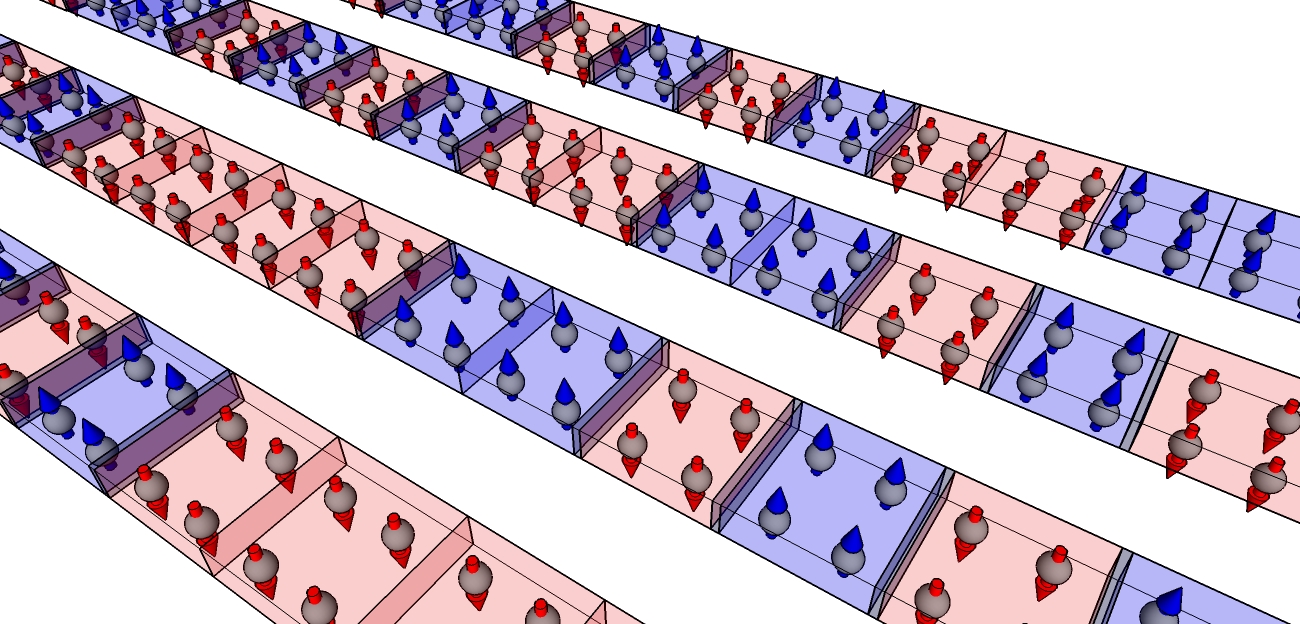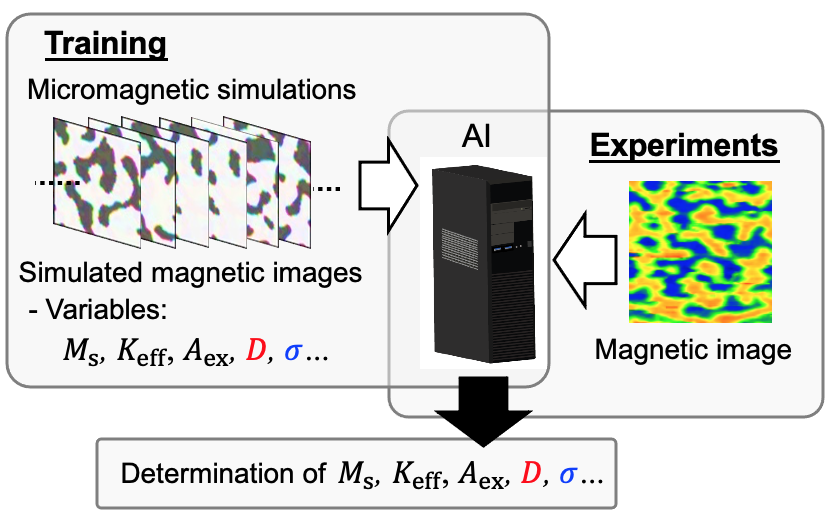Bit error rate of Racetrack Memory
We decode the errors associated with writing and shifting domain walls using nanosecond current pulses in a 5-micrometer-wide wire composed of a Pt/GdFeCo bilayer. We find that writing a domain wall at the edge of the wire causes a bit positioning error of 0.3 micrometers, whereas the shifting process induces an error of 0.1 micrometers per a 2-nanosecond-long current pulse. The error correlation among successive shifting is negligible when the current drive is sufficiently large. These features allow reliable operation of highly packed domain walls in a ferrimagnetic racetrack.

Decoding the magnetic bit positioning error in a ferrimagnetic racetrack
M. Ishibashi, M. Kawaguchi, Y. Hibino, K. Yakushiji, A. Tsukamoto, S. Nakatsuji, M. Hayashi
Science Advances 10, eadq0898 (2024).
[Press release]
Machine learning and pattern recognition are used to determine the DMI from a single magnetic domain image!
The Dzyaloshinskii–Moriya interaction (DMI) and the magnetic anisotropy distribution of thin-film heterostructures, parameters critical in developing next-generation storage class magnetic memory technologies, are estimated from a single magnetic domain image using machine learning and pattern recognition. Micromagnetic simulation is used to generate thousands of random images for training and a convolutional neural network system is employed as the learning tool. We show that the trained system can independently determine the DMI and magnetic anisotropy distribution, demonstrating the potential of image recognition for materials research.

Determination of the Dzyaloshinskii-Moriya interaction using pattern recognition and machine learning
M. Kawaguchi, K. Tanabe, K. Yamada, T. Sawa, S. Hasegawa, M Hayashi, Y. Nakatani
npj Computational Materials 7, 1 (2021).
[Press release]
DMI modulation with current
We find the Dzyaloshinskii-Moriya interaction (DMI) that emerges at heavy metal/ferromagnetic metal interfaces can be modulated with current. The DMI increases with increasing current with a rate that agrees with what is predicted by the model based on the spin Doppler effect. The results imply that the interfacial DMI may partly originate from equilibrium spin current which can be modulated externally.

Current induced modulation of interfacial Dzyaloshinskii-Moriya interaction
N. Kato, M. Kawaguchi, Y.-C. Lau, T. Kikuchi, Y. Nakatani, M. Hayashi
Phys. Rev. Lett. 122, 257205 (2019).


